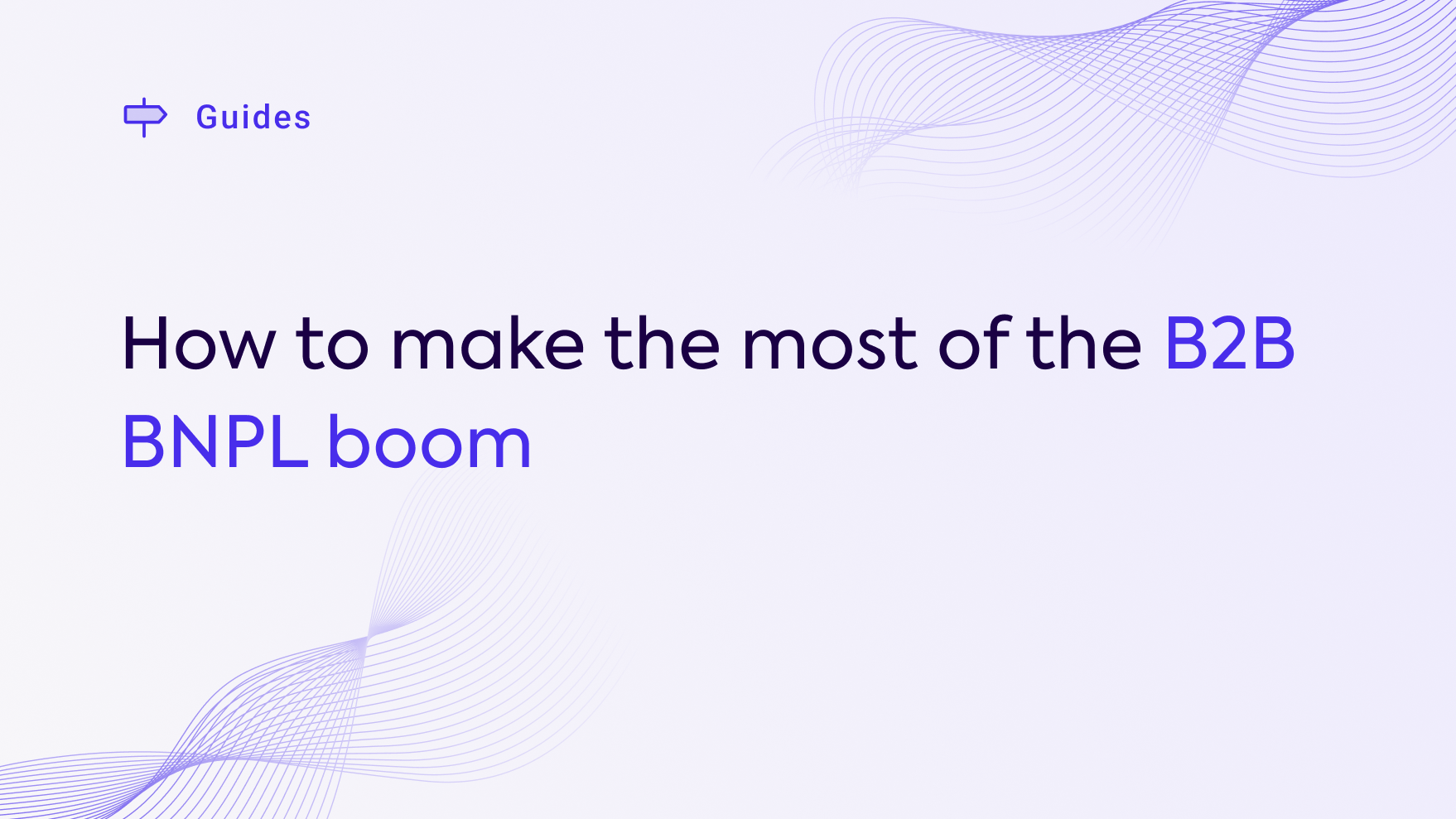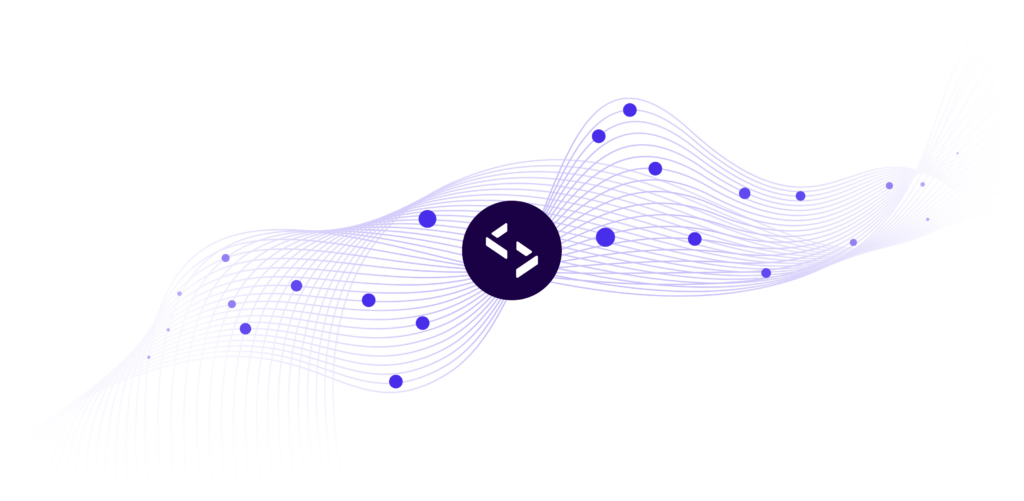
The opportunity to lead in B2B BNPL is huge, but success is not guaranteed.
Buy Now, Pay Later (BNPL) has massively disrupted the consumer payments space in the last few years. With online BNPL volumes predicted to hit $680 billion worldwide in 2025, clear market leaders have emerged. This includes Stockholm-based Klarna, which made headlines in 2020 after becoming Europe’s biggest fintech unicorn ?.
But what about B2B BNPL? B2B is a much larger, rapidly growing market. The opportunity to succeed is incredibly lucrative, but innovation in the space has lagged behind. Until now, at least. Read on to learn more about the challenges in B2B BNPL and how you can overcome them to deliver best-in-class solutions that work for both buyers and sellers.
BNPL, but for businesses
It’s true that the concept of BNPL for businesses is nothing new. Net payment terms of 30, 60, 90, and even +120 days have been commonplace for some time now. But this simply doesn’t work for most buyers or sellers, particularly within the SMB space.
For sellers, these terms have historically forced them to accept delayed payments, absorb additional risk, and take on the responsibility of collections. Without comprehensive risk management strategies, these businesses struggle to offer attractive financing, which results in them losing out on sales. And when they eventually do get paid, reconciling the data is complex and takes far too long.
On the other hand, buyers are forced to accept unattractive and expensive finance terms and adopt manual processing, leading to challenging accounts payable processes.

This can have incredibly damaging consequences. According to research, 3 in 5 businesses are waiting for outstanding invoices to be paid and 37% of UK small business owners have considered closing their company because of cash flow issues.
Understanding the B2B BNPL landscape
The market landscape is changing. Outdated offerings such as invoice factoring are being re-thought and re-packaged. Providers such as Cloudfloat, Slope, Two, and Billie are rapidly gaining traction due to their innovative propositions and fixation on superior customer experiences.
But achieving success in this field is far from guaranteed. B2B BNPL is much more complicated than regular BNPL. Payment volumes tend to be much higher, and more, better-quality data tends to be required. Below we explore the main challenges B2B BNPL providers face.
What are the challenges in B2B BNPL?
⚖️ Carefully balancing risk with rapid decisioning
When it comes to BNPL, businesses expect speedy decisions. But, achieving this doesn’t need to jeopardise your risk model.
Accounting integrations enable you to make smart decisions in minutes.
By embedding the linking of your business customers’ systems directly into your application journey, you can gain consented access to a wealth of financial information, such as Profit and Loss and Balance Sheets, that can be used to determine the creditworthiness of a business instantly. For example, supplier concentration can be used to assess the risk of default, and the time it takes a business to pay suppliers is a helpful indicator of their reliability.
? Gaining and retaining market share
With the B2B BNPL space becoming increasingly competitive, many players are looking for effective ways to attract and retain new customers. Smaller businesses present a significant untapped market, but many lenders struggle to process smaller loans profitably. Often, the cost of processing these applications compared to the amount the lender stands to earn simply doesn’t stack up. As a result, a large proportion of smaller businesses have historically been excluded from accessing lines of credit. This can have severe ramifications for the average SMB expected to cover payroll and operating expenses, all before they’ve been paid themselves.
Automating underwriting and decisioning processes using integrations is a simple way to lower costs and increase efficiency.
This enables you to capture a greater market share by extending credit to smaller businesses while remaining profitable and without absorbing additional risk.
? Offering competitive rates without compromising on revenue
With a detailed understanding of your merchant customers’ performance, you can offer bespoke rates that outstrip your competitors. But doing this effectively requires more data than what’s accessible via Open Banking, something that most B2B BNPL providers currently rely on.
Access to alternative data sources is crucial to painting a more detailed picture of your merchant customers’ performance.
For instance, utilizing the data found in your customers’ eCommerce, point of sale, and other payment systems such as order history, customer rates, and disputes helps you determine the quality of their product or service and how well they’re doing. This level of additional insight allows you to offer tailored pricing and flexible terms that perfectly suit the unique position of each of your business customers.
? Delivering a superior customer experience and new features
Small businesses are now using more applications than ever before and churning through over 30% of them every year. As providers compete to guarantee stickiness by offering a superior customer experience, they are increasingly introducing new features to their product suites.
Due to the sheer number of applications SMBs now rely on, the time they must spend reconciling data between disparate systems has also increased. This is a big problem for business owners and finance teams that can be reduced by offering them the ability to settle open invoices within your application via automated reconciliation.
These same small businesses often lack crucial insights into their financial health, making it difficult to forecast cash flow and schedule upcoming spending accurately. It can even result in them having to absorb unwanted and unplanned costs.
You can solve this pain point for your customers by using integrations to surface crucial cash flow insights in detailed dashboards.
These features can be used to boost revenue or offered to your customers for free to encourage stickiness.

How can you capture this opportunity?
You should be thinking about how you can build integrations into your customers’ financial software. That is clear. Unfortunately, building the API infrastructure required to overcome the challenges outlined above is a huge undertaking, particularly for fast-growing businesses with busy roadmaps. Read our guide to building accounting and commerce integrations to get a better idea of the challenges involved.
One of the reasons for this is the number of integrations required to serve your customer base. Consider that the accounting platforms your customers use vary depending on their size, industry, location, and other factors. Then consider that many businesses use more than one eCommerce, PoS, or payment system. Building to each of these platforms is far from a copy and paste process. Each platform has a vastly different data model and will present its own unique set of challenges. Your approach, as well as the resources required, will vary significantly depending on the integration.

You need to be able to make sense of the data too, and it definitely doesn’t help that every SMB does their accounts in their own bespoke way. Raw business data can be challenging to ingest without helpful metrics, ratios, and other tools. But, building this functionality requires hundreds of thousands of data points from different businesses in different sectors using different platforms.
What Codat does differently
Over 200 clients, including leading B2B BNPL and payment providers such as Cloudfloat, Melio, and Plastiq, already use Codat to deliver better customer payment experiences.
Codat not only provides real-time, standardized connectivity to 30+ of your customers’ accounting, eCommerce, PoS, and banking platforms but processes that data to make it even more usable and useful.
We surface helpful insights on your customers using auto-calculated metrics and ratios. We also automatically cross-reference data sources and normalize raw accounting data to a single chart of accounts, so you can further minimise data processing and make smarter credit decisions with confidence.
Sign up for a free account today or contact a Codat specialist using the form below.
